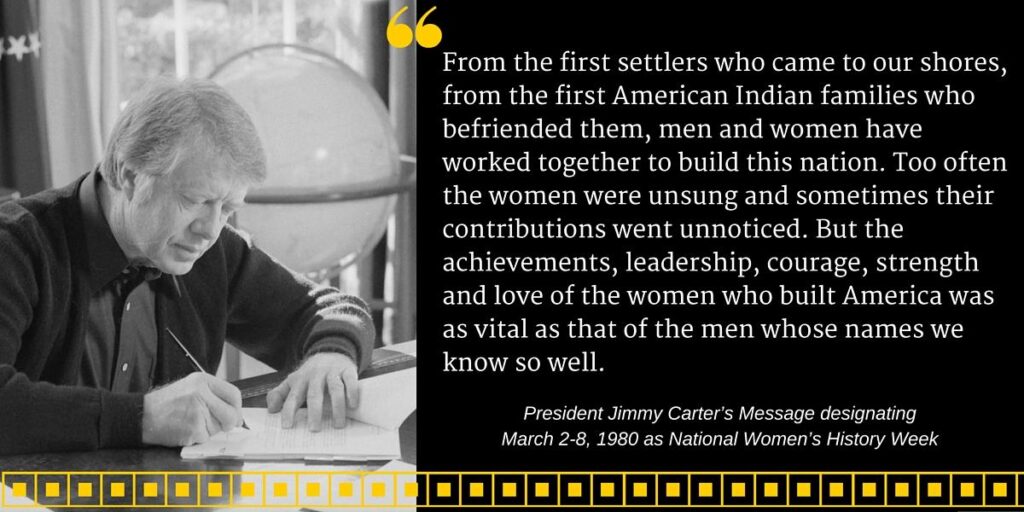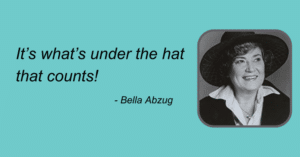Each year March brings the first day of Spring, St Patrick’s Day, Plant a Flower Day, Daylight Saving Time, and the celebration of Women’s History Month.
Once a year we set aside time to focus on brave women who have shaped our world. Women’s History Month is a celebration of the often-overlooked trailblazers, thinkers, and leaders edged out of the spotlight in our history books.
Whether you’re familiar with the stories of these remarkable women or eager to discover unseen changemakers, this month we dive deep into some of our favorite women in our series: Do You Know HerStory?

Do You Know HerStory? Mother Cabrini
As a little girl growing up in New York City, Brooklyn was my world. There were the occasional trips to visit family in New Jersey, Long Island or Connecticut, but

Do You Know HerStory? Bella Abzug
I was fortunate to grow up during a time when the world was changing dramatically for women – for the better! Although many were involved, one woman in particular, left

Do You Know HerStory? Artemisia Gentileschi
She was a beautiful Italian Baroque painter, born in Rome in 1593, who endured crushing patriarchal prejudice throughout her career, and even rape… one of the original #MeToo victims. During

Do You Know HerStory? Dame Cicely Saunders
I’m grateful to Dame Cicely Saunders (and a network of like-minded women) for creating the modern-day hospice movement. Fortunately, and unfortunately, I have personal experience to draw from. Dying May
Wisdom She Wrote strives to celebrate the achievements, and the sheer importance of recognizing women’s contributions—not just in March, but all year round.
History of Women’s History Month
What started as a single day over a century ago, expanded to a week and now finally a month of our own. This month we shine the light on smart, accomplished, gifted, magnificent women who were marginalized in their own time and left out of most of our history books.
For over a century, women’s activism has been an organized cause in the US. In 1909, National Women’s Day was conceived and organized by labor activist Theresa Malkiel in New York by the Socialist Party of America.
Two years later, in 1911 International Women’s Day was born. Over a million people celebrated in Austria, Denmark, Germany, and Switzerland. Revolutionaries in Russia celebrated and made it an official holiday in March of 1917.
Initiated as a labor movement, then known as a communist holiday, there was little traction to expand the celebration until 1967 when International Women’s Day was championed by second-wave feminists as a day of activism.
A decade later, the United Nations asked member countries to recognize International Women’s Day.

International Women’s Day in the US Expands to Women’s History Week
During the second wave of feminism, a Teacher, Molly Murphy McGregor, took the baton and created a weeklong celebration throughout Sonoma County, California highlighting women’s contributions to American history, culture, and society.
Building on the Sonoma success, a 1979 women’s conference with Sarah Lawrence College, the Women’s Action Alliance, and the Smithsonian led a lobbying effort for national recognition of Women’s History Week.
In 1980, President Jimmy Carter issued the first Presidential Proclamation declaring the week of March 2–8 as National Women’s History Week. In Carter’s message to the nation, he stated,

Just seven years later with constant lobbying efforts by women’s groups, Congress passed a proclamation recognizing March as Women’s History Month.
Importance of Women’s History Month
Why is there no Men’s History Month?
Because every month is Men’s History Month
Even as we celebrate Women’s History Month by honoring well-known women’s accomplishments there are many achievers who still remain unknown.
The impact on society (both women and men) can not be overstated when we recognize women’s historical achievements, as well as current contributions.
Benefits of Women's History Month
Highlighting Role Models
Stories of scientists, politicians, activists, artists, and leaders from diverse backgrounds and fields show young women that they too can achieve greatness in any area they choose.
Education and Awareness
Ensuring that the stories of women's achievements are included in the educational curriculum, which can inspire both boys and girls to challenge gender stereotypes and advocate for equality.
Empowerment
Highlighting the struggles and successes of women engaged in our democratic process teaches young people about the empowerment of participation in democracy and social movements.
Sense of Community & Solidarity
As we explore and celebrate women’s history, we create communal connections that can span generations.
During Women’s History Month, we collectively honor all women recognized in history, and those who are not. As we strive to shine the light on women’s legacies, we work towards a society where gender equality is realized.
Share this post:






